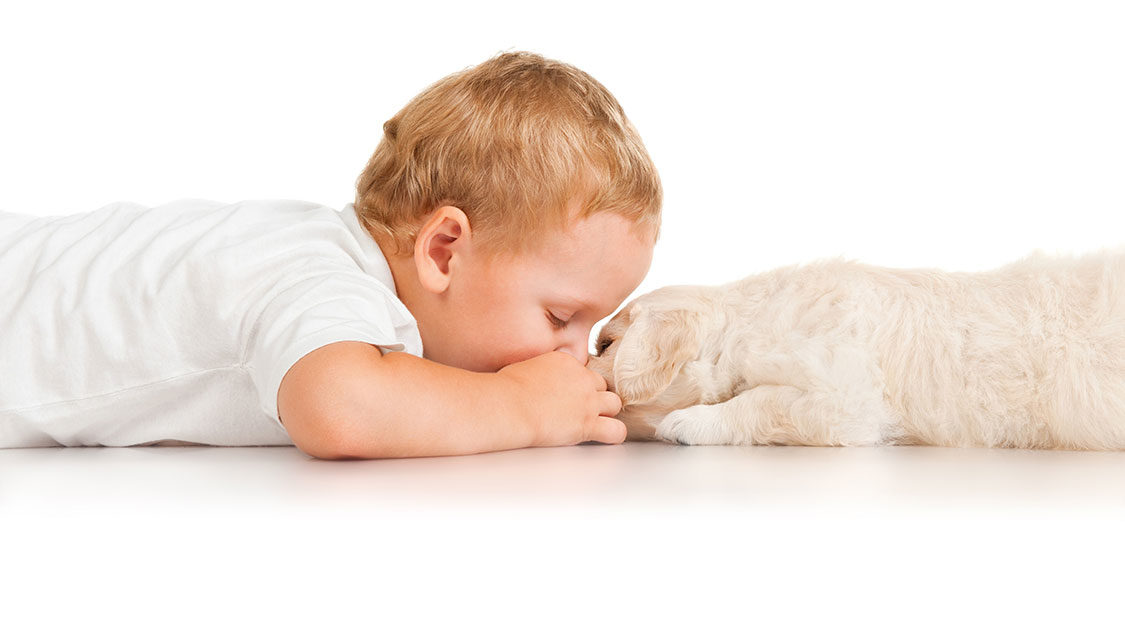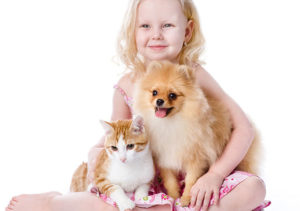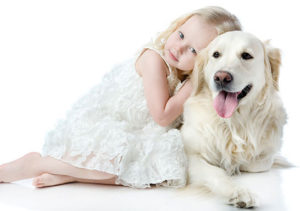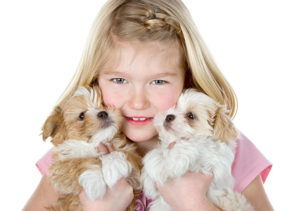How dogs teach our kids responsibility, sharing and communication – Part 2

Every person who buys a puppy, or adopts a new dog, does so with the intention of teaching the new member of the family dog tricks, training plans, and such – but it is also common to use them to help teach the children.
How can a dog teach your kid?
Not only have I seen teaching-dogs in homes all around the country, but many progressive schools use animals as an integral part of their programs. Marie Montessori, the famous Italian doctor and educator, filled her books on the Montessori Method with fruitfulness of animal/child relationships.
Psychologists, too, use dogs as one way of teaching children who are lost mentally into a deep world of fantasy. The dog is sometimes the only reality that these children will respond to. The basis for this method of communication – no matter how serious or light-hearted – is an age-old recipe. It is the simple, uncomplicated friendship of child and dog. This simplicity frees the child to learn.
Missing are two natural ingredients found in human relationships – complexity and competition; a child’s relationship with brothers and sisters is normally fraught with rivalry, and parents are seen as symbols of authority.
A dog simplifies by acting out his feelings – whether joy or shame. You can explain to children the dog’s motivations and reactions. In fact, dogs are a teacher’s ideal – a living illustration.
The road to responsibility
Dogs are an excellent tool in teaching your children about responsibility. Remember not to make your child feel that he is doing a chore, rather suggest the activity, then give him the skills to handle it.
Let’s take brushing the dog as an example. Don’t forget that your child may not know how to use a brush properly and the dog may not know what the brush will bring – pain or pleasure.
Acquaint both of them. Tell the child that the dog has never seen the brush before and that since he recognizes things through his sense of smell, letting him smell the brush and any other equipment you use will make them familiar.
Demonstrate brushing against the dog’s fur and then back with it. Break down the brush strokes into different lengths – one to use for long hair, another on the dog’s chest, and another near his head. That way you give the child more control and the chances of his unintentionally hurting or scaring the dog and the dog scaring him are lessened.
Point out verbally to your child
Point out the purpose of brushing:
“You brush with and against his fur to loosen dead skin and stimulate the new skin. You are really dressing him in a new coat – one that keeps him warm, and keeps the rain from getting through to his skin or even helps him to be cooler in the summer.”
Relate it to the child’s own experience:
“Brushing makes him comfortable. Like how mommy irons your clothes to keep you comfortable, dogs feel good when they have been brushed.”
Point out how the dog is responding:
“See how he lies on his back. He’s showing you he enjoys it.”
And finally, make good use of the times that do not by-the-book:
“He’s wiggling to get away because he’s not sure what you are going to do. Do it easy and be persistent. Give him a chance to see how nice it is. Maybe then he’ll be still.”




